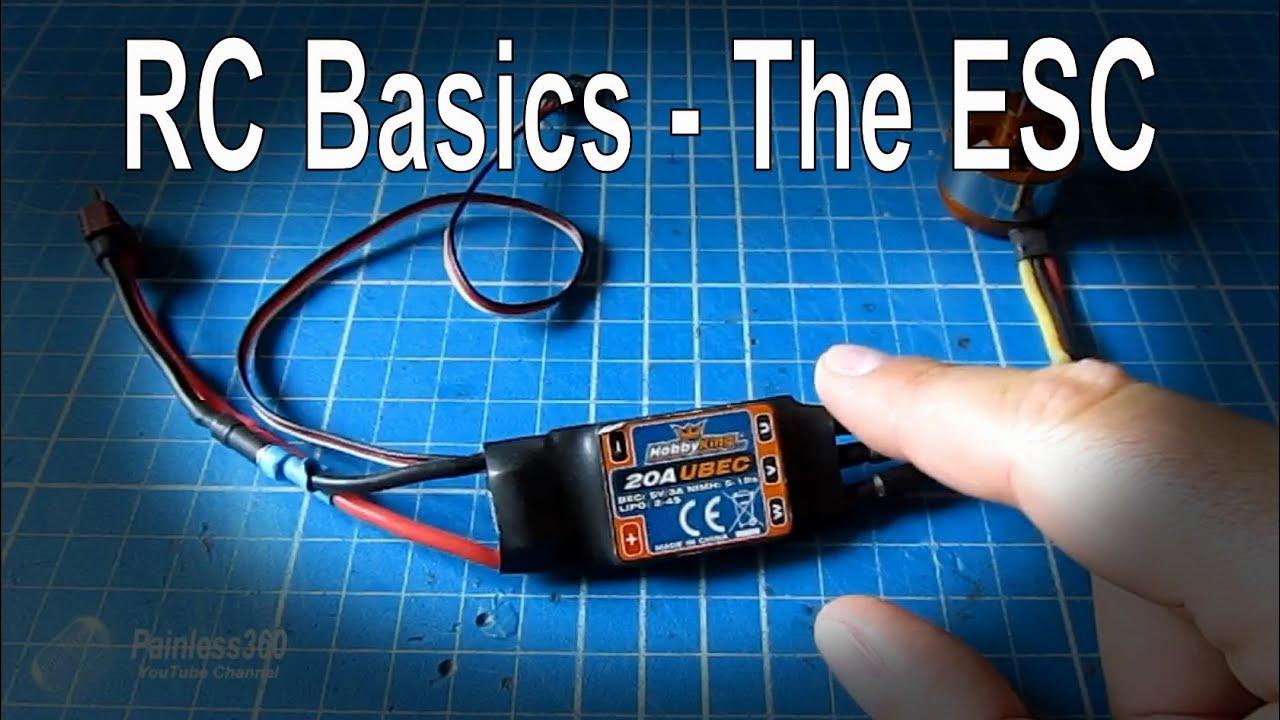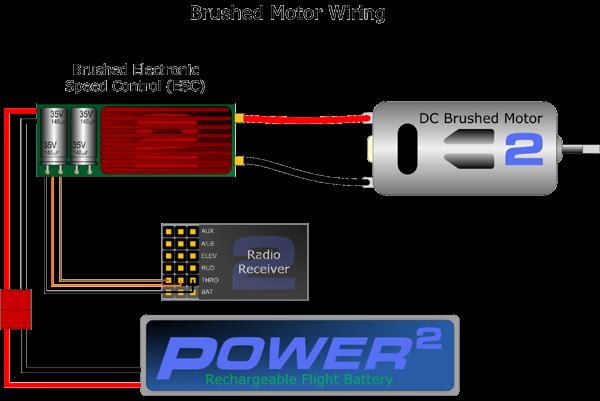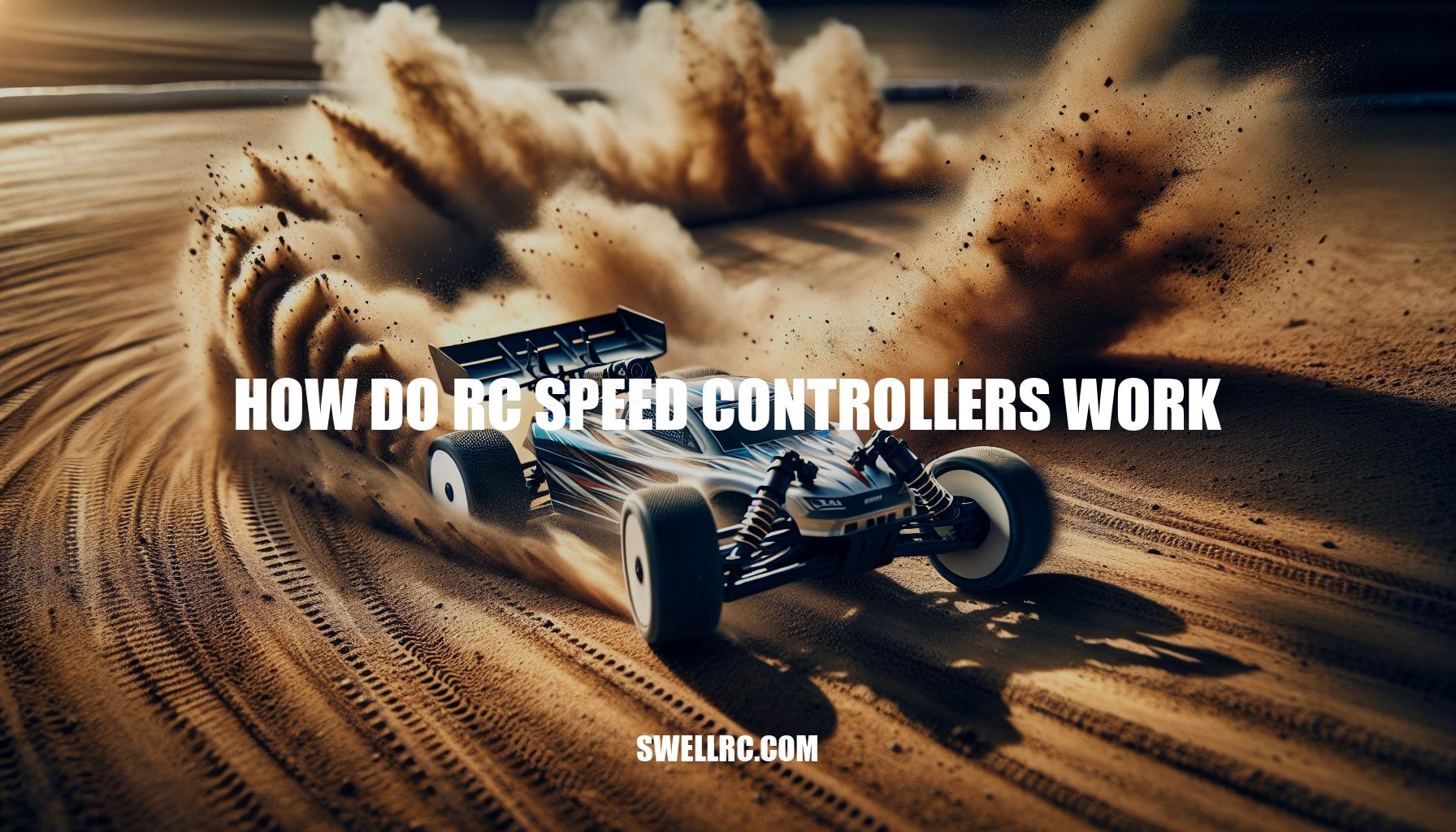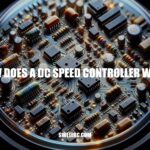How Do RC Speed Controllers Work: A Comprehensive Guide
Radio Controlled (RC) systems, aren’t they just remarkable? The thrill when you’re in command of a vehicle that zips and zooms just with the twitch of your fingers! If you’re an RC aficionado like me, you get it. And guess what? We’re not alone. In fact, there’s a buzzing community of us! According to HobbyKing and Tower Hobbies, two of the biggest hobby websites around, there’s been a significant uptick in the sales of RC toys in recent years. And why wouldn’t there be? Between the technical wizardry and sheer adrenaline-filled fun, RC systems are a world unto themselves just waiting to be discovered. But hold on to your controller, because it’s about to get a whole lot more exciting as we delve into the heart of these systems: the speed controllers. Buckle up, my fellow RC enthusiasts; this is going to be quite a ride!
The magic of RC speed controllers
Ever wondered how do RC speed controllers work? Let us demystify it for you! Broadly described, RC Speed Controllers are like the unsung heroes of our beloved RC universe! They are the little electronic devices sitting in each of our RC cars, boats, planes, and even drones that control the speed of their electric motors. These little wizards interpret the commands from the receiver, providing the right amount of power to the electric motor- similar to a gas pedal in your car. They influence how briskly your favorite RC vehicle accelerates, and how swiftly it decelerates. Imagine racing your RC car without a proper speed controller, it would be as chaotic as driving a car without brakes! Through data provided by RC component manufacturers like, say, Traxxas or Horizon Hobby, it’s evident just how crucial the role of an RC speed controller is in ensuring you’re in control of your RC experience. Whether you’re a seasoned hobbyist or a beginner just stepping into the fascinating world of RC, understanding these speed controllers will not only educate you but also supercharge your RC hobby game. What a thrill!

What is the importance of an RC speed controller in terms of controlling an electric motor’s power?
So, you’re wondering about the importance of an RC speed controller, right? Well, my friend, it’s an absolutely vital part of managing an electric motor’s power. Think of it as the orchestra conductor of your RC setup, constantly fine-tuning and balancing the performance. Without it, you would lack precise control over your speed and direction, turning your lovingly chosen RC device into an unpredictable beast. The beauty of an RC speed controller is its ability to modulate power levels from the battery to the motor. It’s not just a switch that turns power on or off, it’s a sophisticated tech guru that says ‘let’s get this exactly right!’. So, in essence, using an RC speed controller puts you firmly in the driving seat (pun intended), giving you the freedom to fine-tune your RC experience to your heart’s content. Never underestimate its importance – it’s really the secret sauce that lets your electric motor shine!
Unleashing the Power: How RC Speed Controllers Work
Stepping into the world of RC speed controllers, you’ll notice two major types: Brushed and Brushless. Now, picture an orchestra with a conductor, where the conductor signals the musicians when to begin, how fast to play, or when to change tempo. This is roughly how a speed controller works. It is the ‘conductor’ that communicates with the ‘musicians’ (or the motor) to regulate power, change speeds, or maybe even get a bit theatrical with some pulse-width modulation!
Let’s dive a little deeper. Brushed controllers are often found useful for beginners, as they’re relatively cheaper and simpler to handle. They’re primarily used with brushed motors, which are easier to maintain. On the other hand, brushless controllers are like the quieter, more powerful kid in the corner. They’re nuanced, delivering smoother operation and faster speeds, but come with a steeper learning curve. You’ll usually find these in high performance RC cars or drones, achieving blazing speeds that could leave you breathless! Manufacturers like Traxxas or Horizon Hobby offer exhaustive manuals that could help you delve into the intricacies of these speed controllers.
It’s fascinating, isn’t it, how something so small can have such a significant impact on your RC experience. So remember, knowing how do RC speed controllers work could make all the difference between having a good time with your RC device and truly mastering it.

What are the differences between brushed and brushless RC speed controllers?
To make your RC vehicles really get up and dance, a good speed controller is key. Now, with brushed and brushless RC speed controllers, I’m sure you’re wondering, “What’s the difference right?”
Let’s break it down. Brushed speed controllers are often simpler, cheaper, and perfect for beginners. They work by mechanically switching the motor windings, sort of like a DJ flipping records. The brushes in these controllers, however, may wear out over time and require replacement – a bit of a fuss, I admit.
On the other hand, brushless speed controllers are a bit more high-tech. Instead of physical brushes, they use electronic sensors to manage the motor. This means a smoother and more efficient performance, like a symphony in comparison. They are more expensive though and need a specific type of motor to work properly.
All in all, brushed controllers are great for rookies or budget builds, while brushless controllers are worth considering if you’re ready to splurge on performance and longevity. Of course, it’s always about what makes you have the most fun with your RC toys. After all, that’s what it’s all about, isn’t it? Hope this clarifies things for you. Happy racing!
How RC Speed Controllers Work
Delving into the nitty-gritty of how RC speed controllers work, these nifty gadgets can be likened to a complex dimmer switch for the motor. They control how fast or slow an RC vehicle moves based on the power they regulate. Picture it this way: you’ve got your RC device, powered by an electric motor. The speed controller is basically the ‘boss’ of this motor, telling it when to rev up or slow down. So, how do RC speed controllers work? This process involves sending power signals from the controller to the motor, with the intensity of these signals determining the motor’s speed.
Well, here’s a fun fact. Did you know technology used isn’t a million miles away from the principle behind how a typical light dimmer switch works? Just as a dimmer switch allows you to tweak the brightness level of a light bulb, the speed controller adjusts the speed of the motor. This manipulation happens through what electronic geeks call Pulse Width Modulation (PWM). It’s a fancy term, sure, but it just means that the controller varies the pulses’ length sent to the motor, speeding it up or slowing it down as needed.
But of course, there’s more to it technically, and this can vary from one speed controller to another based on its specifications. You can check out the specifics from electronic component suppliers like SparkFun or Adafruit. But beyond the technical finery, the bottom line is that the speed controller serves as the ‘brain’ of the motor, steering the RC device the way you want it to go. Sounds smart, doesn’t it? Well, it truly is. And this smart device plays a key role in controlling the speed of your favorite RC toys. Now, that’s power at your fingertips!

What is Pulse Width Modulation (PWM) and how does it affect the speed of an RC motor?
Pulse Width Modulation, or as cool folks like us say – PWM, is pretty much like the rhythm section of the RC motor band. Crazy analogy? Stay with me here. See, in simple terms, PWM is a technique that controls the amount of power delivered to an electronic device – in our case, the RC motor. Picture a drummer – the faster the drum beat, the faster your heart races, right? Similarly, the quicker the PWM signals, the faster the motor spins.
But hold up, there’s a little more to it. It’s not just about how fast these signals are sent, but also how long they hang around – that’s the ‘width’ part of Pulse Width Modulation. If the signals are high for a longer time, it’s like our drummer laying down a solid, energetic beat, making your RC motor all perky and powerful. And when the signals are shorter? Well, you can imagine it like the drummer chilling out a bit, slowing down the pace, and your motor gets the hint and dials back a bit.
But here’s the kicker – the real beauty of PWM is that it maintains the motor’s torque even when the speed drops. So, you’ll still have that robust oomph backing you up, letting you navigate those challenging terrains and nail those tricky manoeuvres.
In a nutshell, tweaking PWM feels a bit like playing around with the volume control. It lets you precisely dial in your motor speed, without compromising on power. It’s the secret sauce that gives you the full control of your RC vehicle, shaping your driving experience just how you like it. Ah, the power of science, isn’t it exciting?
How RC Speed Controllers Work
Time to peek into the world of popular RC speed controllers’ features and technical specs. The stuff that really sets apart the ordinary from the extraordinary, especially when you’re wondering about ‘how do rc speed controllers work’. One critical factor to pay attention to is the voltage. Most commonly, you’ll find controllers operating between 6V to 26V, but it really depends on the specific RC model you’re working with. Then, there is the current rating. This indicates how much power the controller can handle. Typically, the range is from 20A to 120A. However, remember, the higher the current rating, the heftier the price tag!
Another essential feature to look at is the programmability of the controller. Certain RC speed controllers like those available on Amazon offer programmable options, allowing you to tweak and tailor the settings to perfectly match your RC vehicle. Then there’s the aspect of compatibility with specific battery and motor types. Some controllers are flexible, working well with both NiMH and LiPo batteries, while others are more finicky.
- Voltage: Between 6V to 26V
- Current Rating: Usually ranges from 20A to 120A
- Programmability: Customizable to match technological nuances of your specific RC model
- Compatibility: Some work well with NiMH and LiPo batteries both, others prefer one over the other
Just imagine your RC model zipping around a track or soaring through the sky with perfect precision, thanks to an excellent speed controller. That kind of control is worth every penny. Don’t believe me? Check out the must-haves listed on eBay. After all, knowing is half the battle, isn’t it?

What is the programmability feature of RC speed controllers?
So, you’re curious about the programmability feature of RC speed controllers? Well, I promise, it’s not as complicated as it sounds! Think of it as having the keys to your own mini-universe. You see, this feature enables you to modify or tweak the performance of the speed controller itself. From how the brakes work, to the punch or top speed, and even the battery cut-off voltage – it’s all in your hands. It’s like being a master puppeteer!
This allows for a more personalized and tailored driving experience and who doesn’t love something that’s just ‘perfectly them’, right? It’s not just about showing off to your friends or winning races (though, let’s be honest, those are great outcomes too!) but also about finding what works best for you. After all, RC hobbies are all about experimentation, customization, and good old fun! So, gear up and tinker around with that programmability feature! Your RC journey is about to get a whole lot more exciting.
Demystifying RC Speed Controllers
Alright, now let’s get to the nitty-gritty. If you find yourself quietly wondering, “How do RC speed controllers work?” when discussing investments in a new RC device,
you are not alone. So, here are some crucial factors you need to keep in mind.
- Type of RC device: Are you into juicy RC cars speeding on tough terrains or more into soaring RC planes in the blue sky? The choice of your RC device, heavily influences the speed controller you’ll require.
- Intended Use: Planning to put on a grand display at an RC race? Or just some weekend fun with your kids? The purpose will guide you to the right RC speed controller to fit your scenario.
- Motor Compatibility: This is crucial for those who ask, “How do RC speed controllers work with different motors?” Not all RC speed controllers are compatible with all types of motors. For instance, Brushed motors generally need brushed speed controllers. So, always check this before making a choice.
Oh and listen to this! There are even programmable speed controllers out there. Cool, huh? These puppies allow you to customize settings such as brake type, power mode, thermal protection, and more. Digging into some insightful testimonials over at RCGroups would indeed be helpful in your selection process. Remember this, whether you’re an old hand or a rookie, it’s a learning curve for all. So, don’t hesitate to seek knowledge – ’cause once you get a hang of how RC speed controllers work, the ride gets a whole lot smoother!

What are the benefits of using programmable RC speed controllers?
Well, my friend, you’re in for a treat when it comes to the benefits of using programmable RC speed controllers. You see, these little gadgets give unparalleled control over your RC vehicle’s performance. It’s like being the conductor of your own RC symphony!
Firstly, they allow you to tweak the throttle response. This means your RC vehicle accelerates exactly how you want it to. Too zippy off the mark? Tone it down. Need more punch for climbing steep slopes? Crank it up. You see, it’s all about tailoring performance to your liking.
Then, there’s the benefit of active braking. This handy feature can be customized to help improve control during swift turns or sudden halts. It’s like getting anti-lock brakes on your RC! Moreover, using programmable controllers can make a major difference in heat management. These devices can be adjusted to prevent overheating, offering longer play times and potentially better longevity for your RC vehicle.
Now, let’s not forget about battery protection. The controllers can automatically cut off power supply when the battery voltage drops below a certain level. This ensures the battery doesn’t get over-discharged and increases its lifespan. Trust me, your battery will thank you!
So it’s no wonder these clever contraptions have been cherished by RC enthusiasts worldwide. They’re a total game-changer, making your driving experiences more fluid, predictable, and customized. Give a programmable RC speed controller a try – you’ll wonder how you ever got along without it!
In wrapping up this foray into the world of RC speed controllers, it’s important to underscore how instrumental they are in ensuring an optimal RC experience. When you master how RC speed controllers work, it’s like being a virtuoso conductor directing a well-rehearsed orchestra, each section in harmony, creating beautiful music together.
Indeed, just as an orchestra requires a talented conductor to interpret the musical score and guide the musicians, your RC vehicle too, needs a competent speed controller to interpret your commands and direct the motor. Whether it’s an RC car or plane, the speed controller is that hidden gem that dictates its performance – the speed, power, and precision.
As we delve into the features and mechanisms of RC speed controllers, we realize how complex yet fascinating these devices are. From understanding the different types – brushed and brushless, to appreciating the intricate interplay of voltage, current, and compatibility aspects, there’s plenty that goes into making an informed selection.
Whether you are a beginner or a seasoned hobbyist, it’s important not to overlook the critical role these tiny devices play. So, keep that conductor metaphor on your mind, for it illustrates just how impressive and vital RC speed controllers are. And when you finally get to the point where you understand how your controller works, that’s when the real fun in RC hobby begins. It’s like making your own music with your RC device. So, here’s to many joyous symphonies in your RC adventures!



